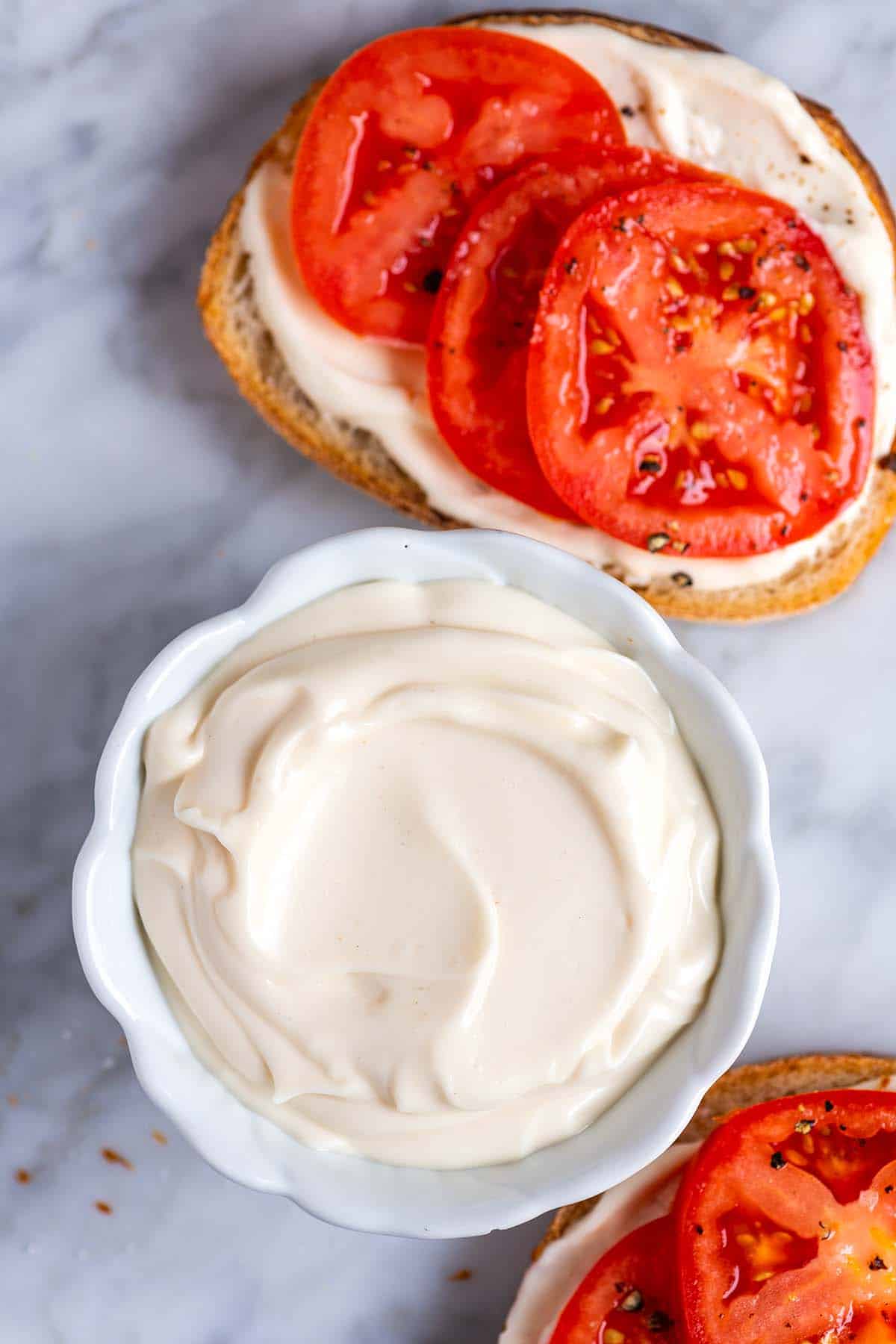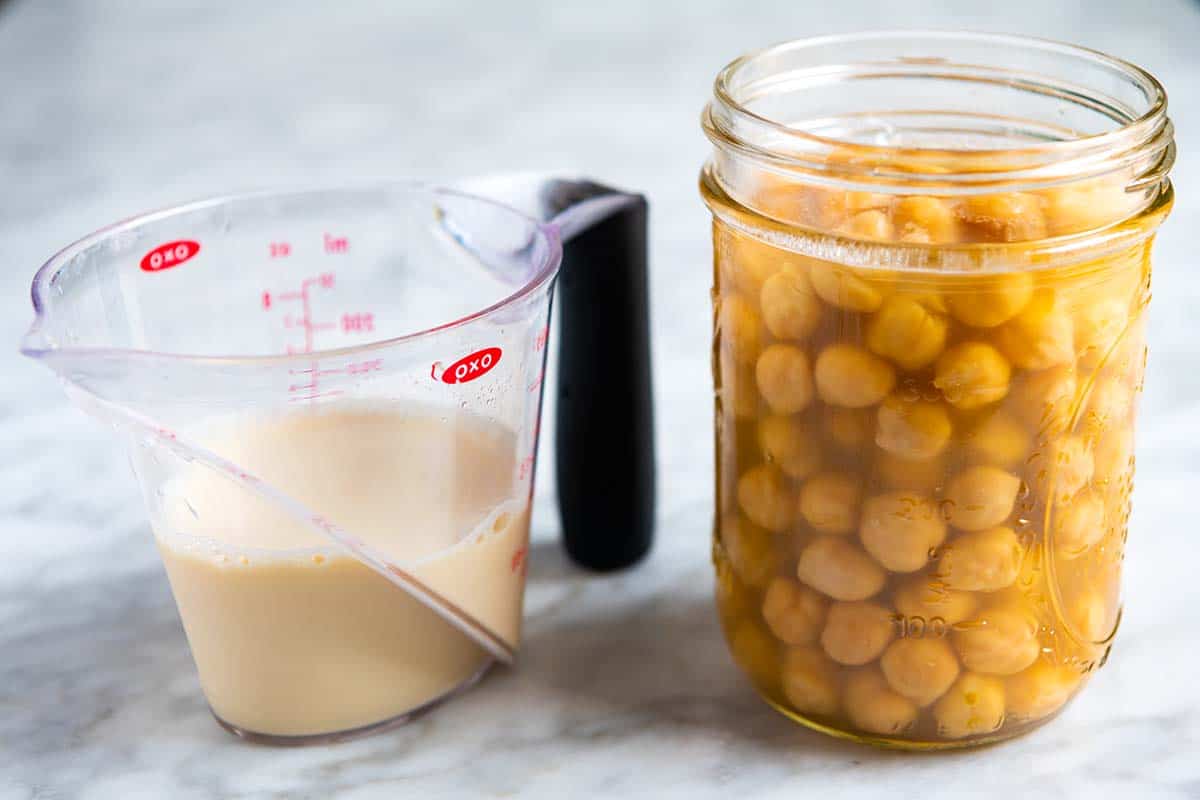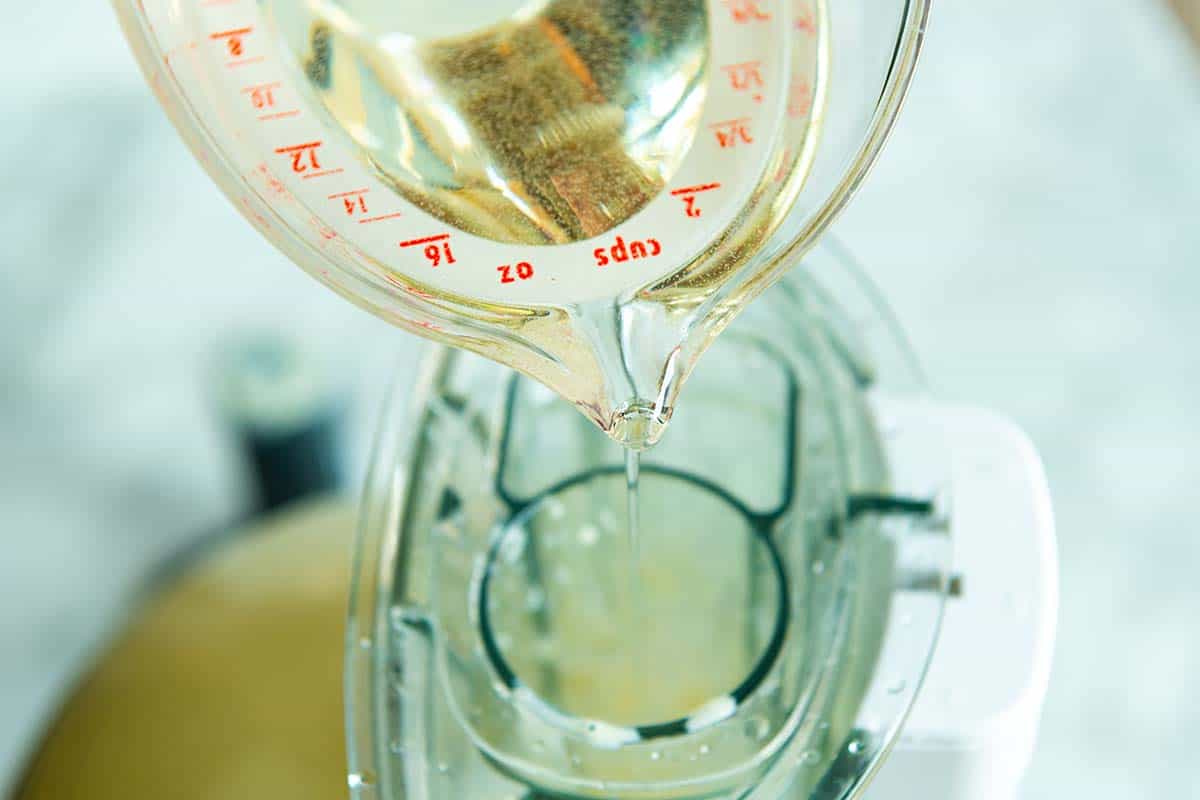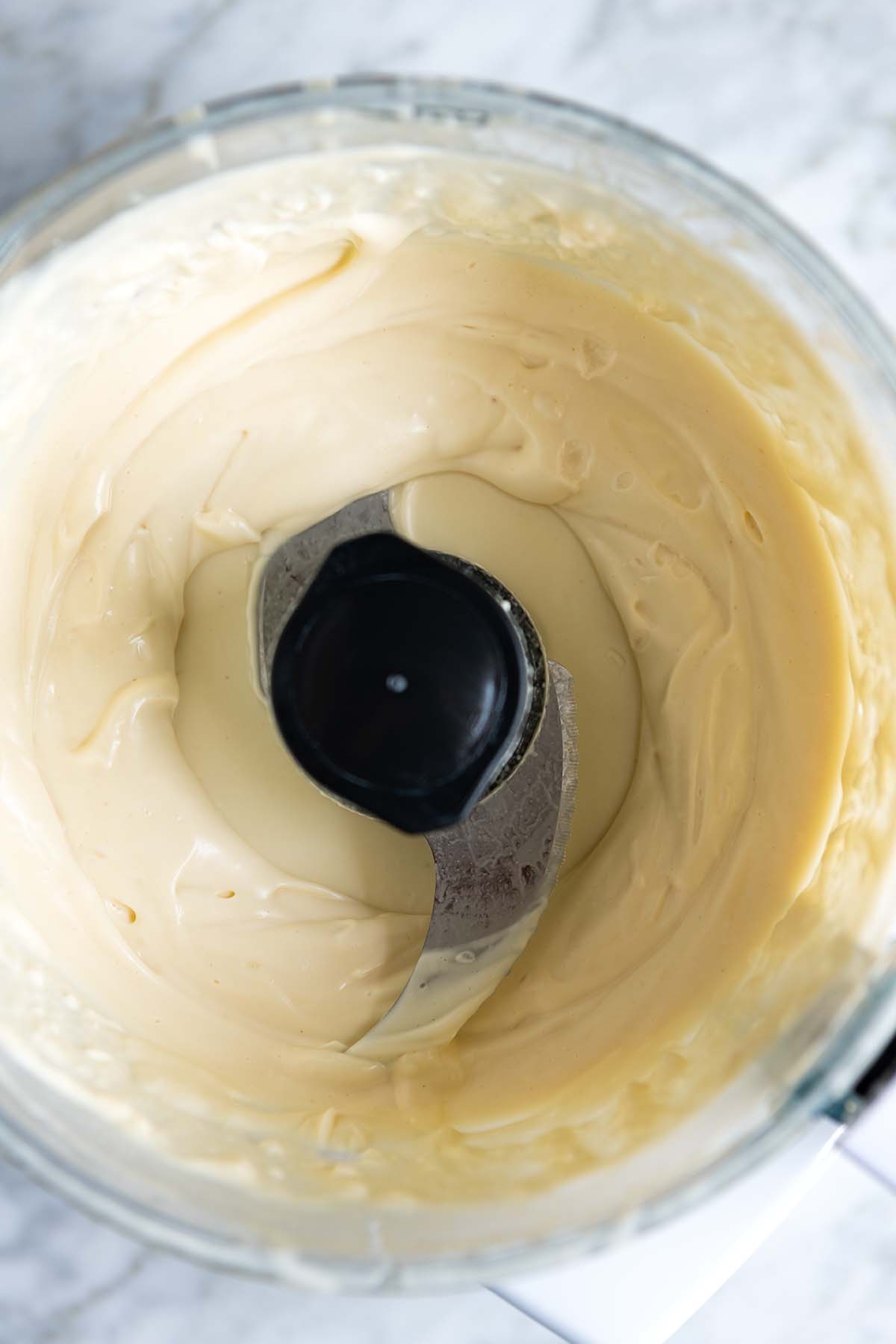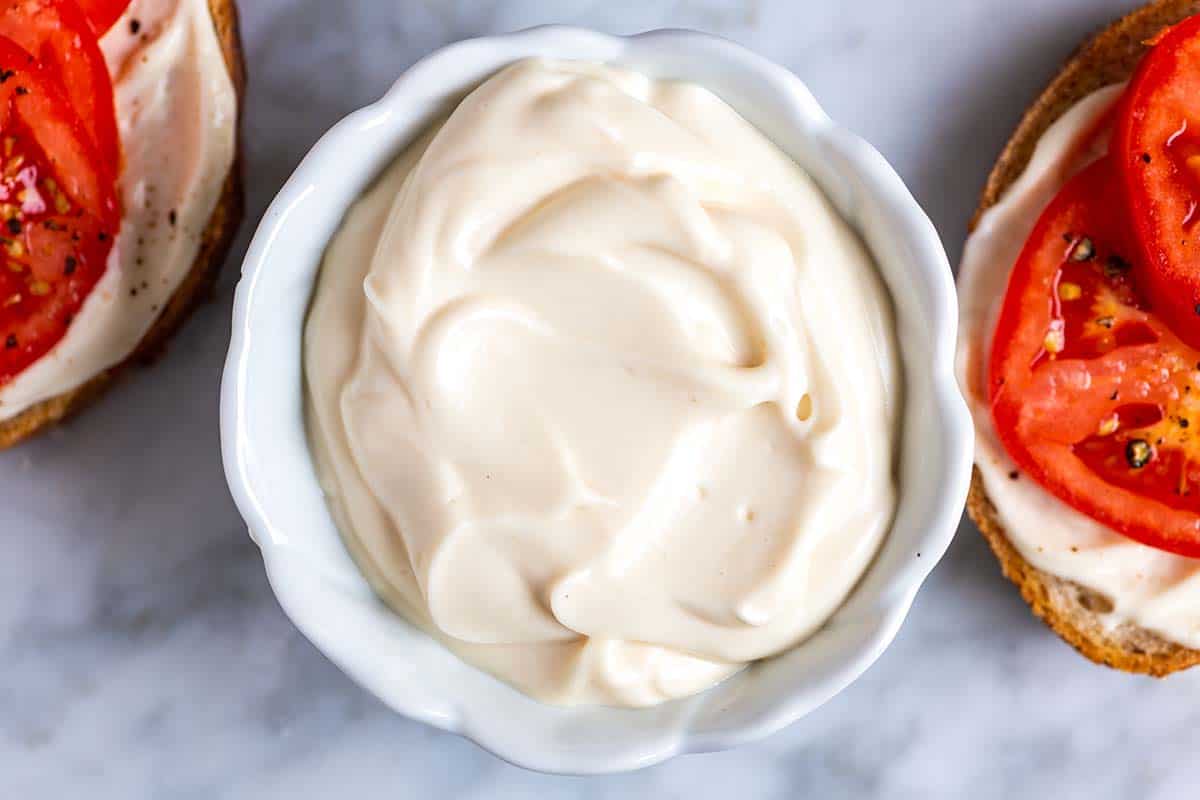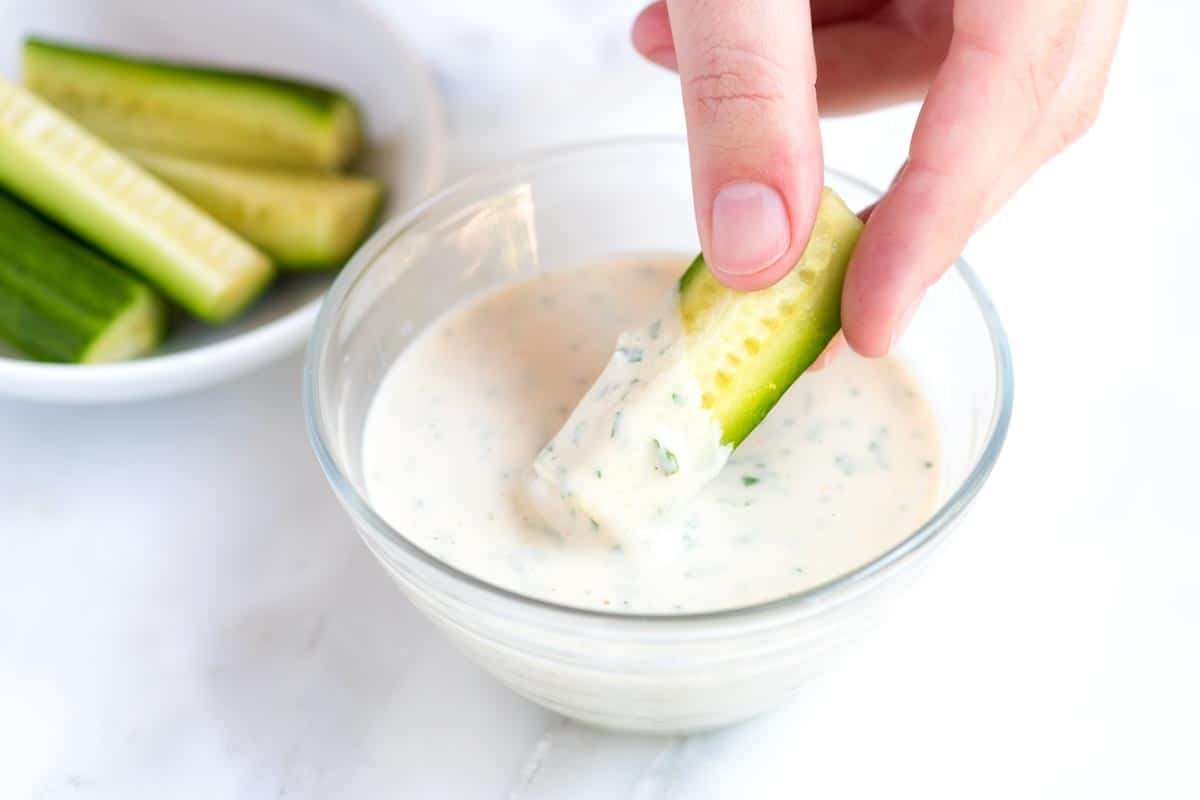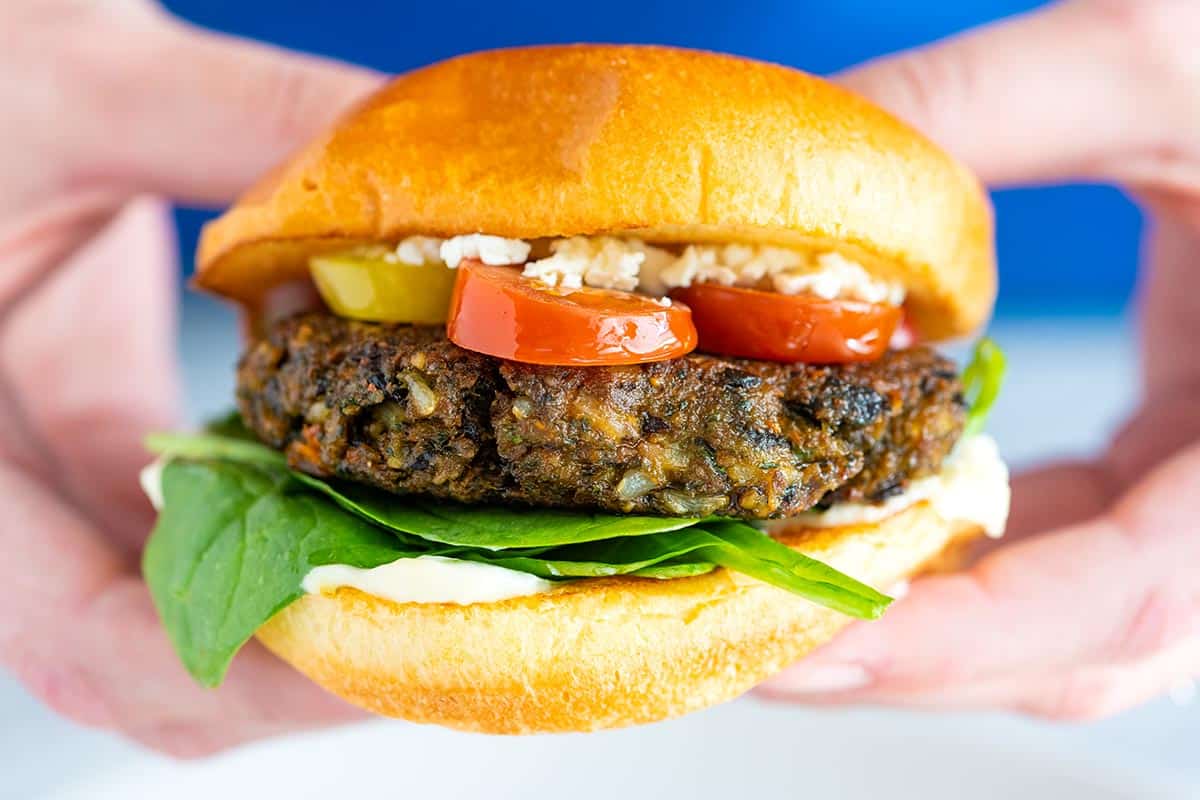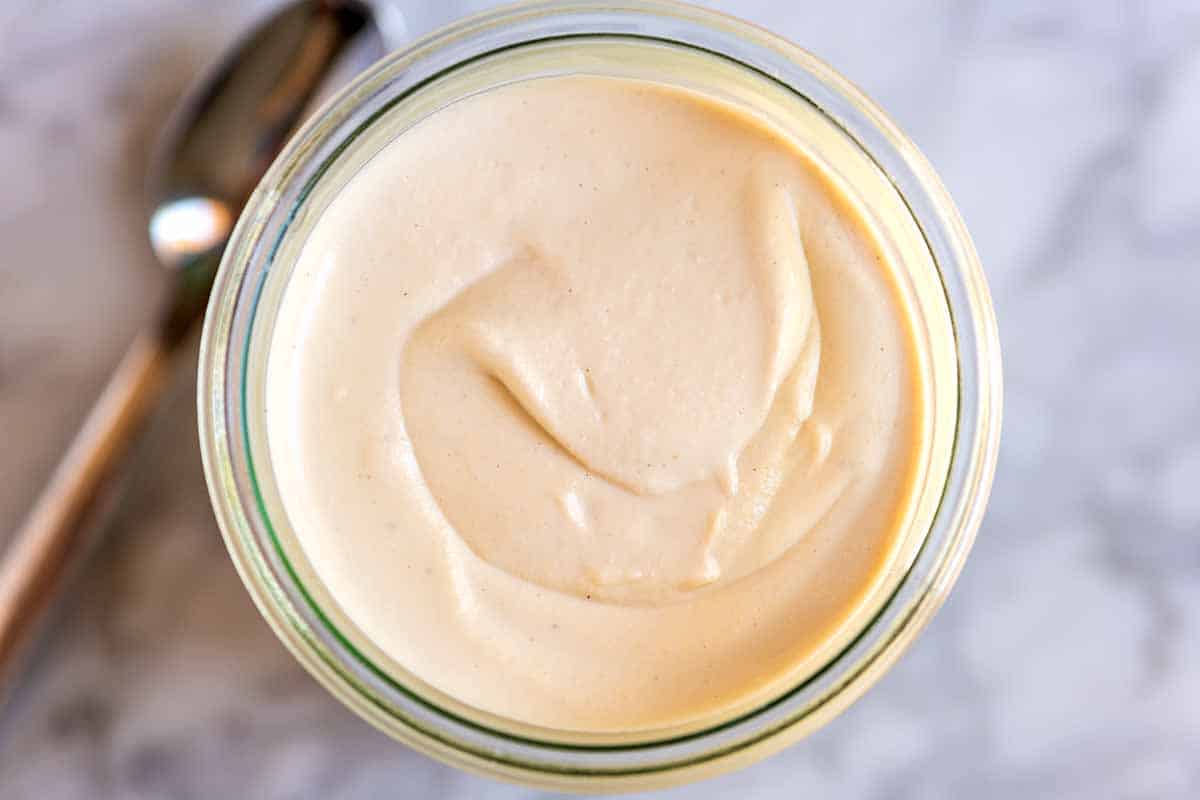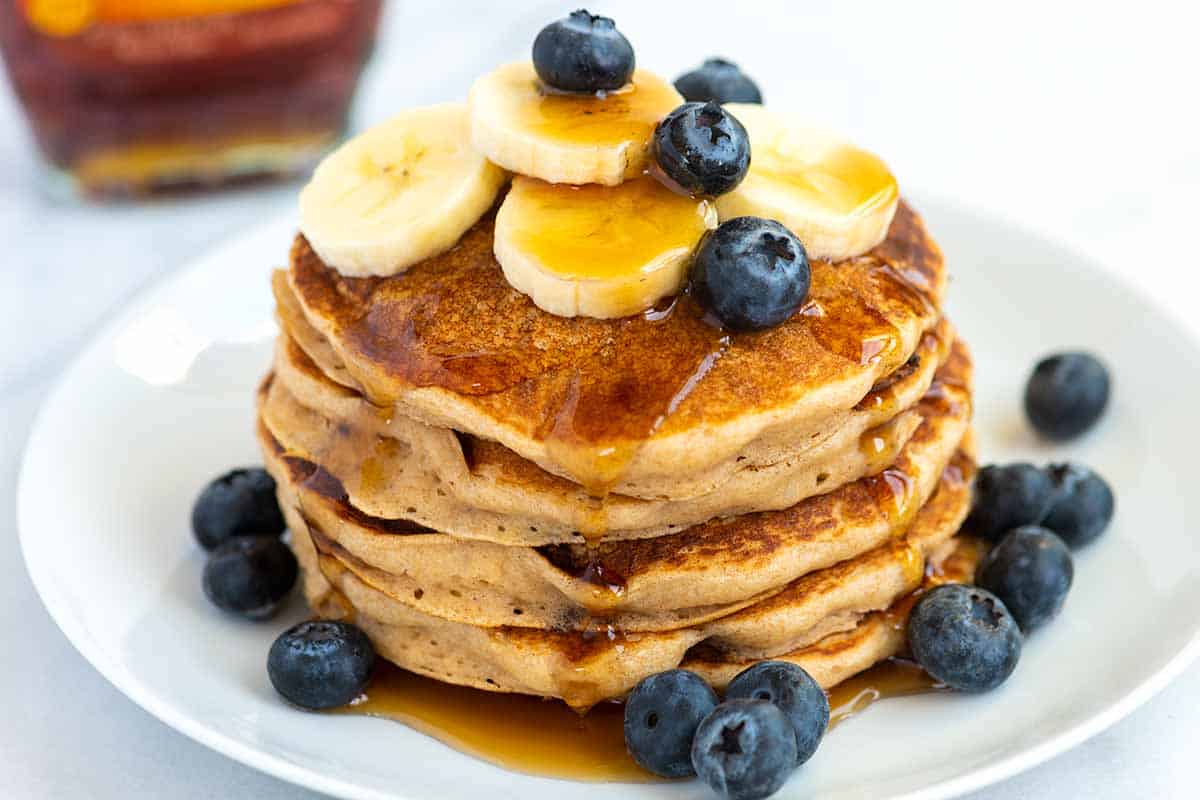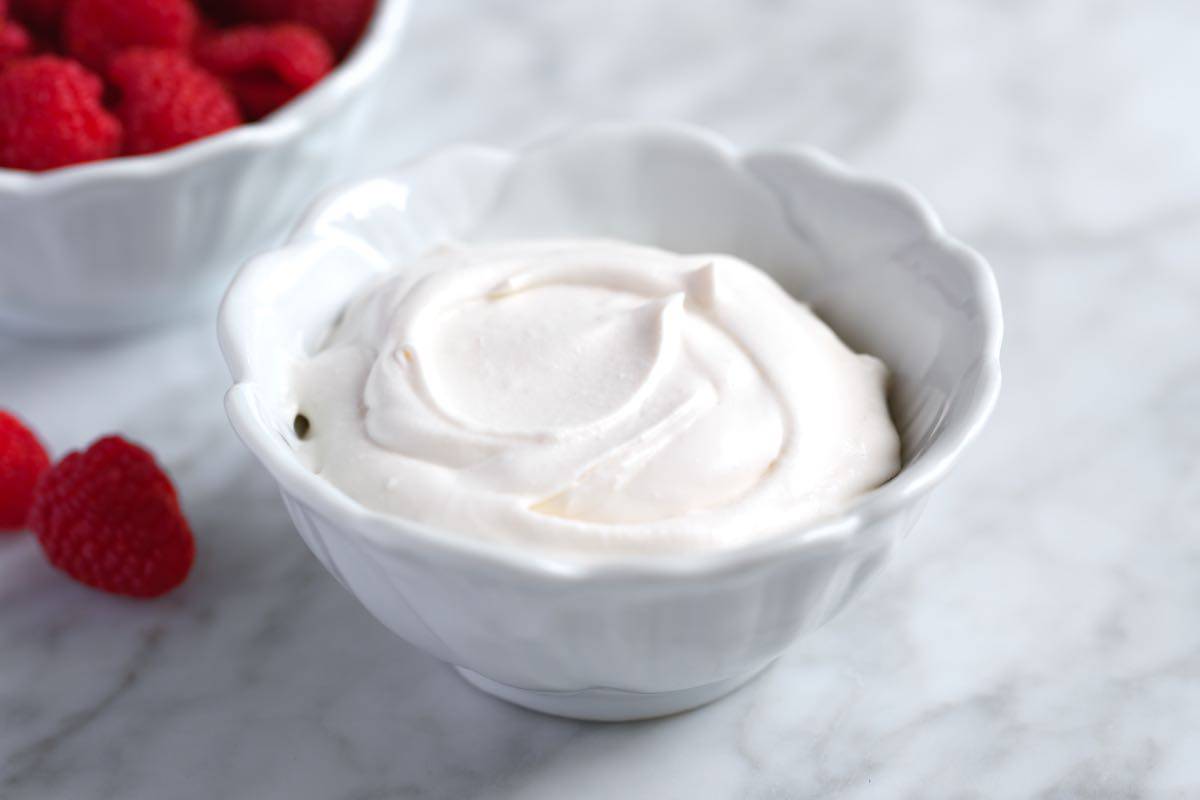You can make vegan mayo in two ways: using soy milk or with aquafaba. I’ve included tips for both below! Our vegan mayo recipe is easy, tastes incredible, and lasts in the fridge for 2 weeks.
Key Ingredients
Soy milk or aquafaba: Our vegan mayonnaise recipe works well with soy milk or aquafaba. If I had to pick one, I would lean towards soy milk. If you cannot eat soy or have a can of chickpeas lying around, my recipe below works well when made with aquafaba (here’s my ultimate guide to aquafaba). Oil: Just like when making regular mayonnaise, you must stream in oil to thicken the mayonnaise. I use a neutral oil like safflower or vegetable oil. Olive oil is an option, but your mayo will pick up the flavor of your olive oil, so I recommend a lighter, fruitier bottle. Vinegar: Red wine vinegar, white wine vinegar, or apple cider vinegar adds tanginess. Vinegar livens up all the other ingredients and makes it taste delicious. Salt: As with most recipes, salt is essential in making the mayo taste good. So, add a pinch more salt if your mayonnaise doesn’t pop in flavor. I bet it will fix it! Dijon mustard: Mustard is another emulsifier and adds extra tanginess. When making our egg-based recipe, we add mustard and love it, so it is perfect for adding here. Lemon juice: We list fresh lemon juice as an optional ingredient, but I always add some when I have lemons. Sweetener: I typically do not add any sweetener, but it does an excellent job balancing out the vinegar. You can add maple syrup, brown rice syrup, and even cane sugar.
How to Make Vegan Mayonnaise
When making the more traditional egg-based mayo, oil is slowly whipped or blended into the egg. By doing this slowly, the mixture emulsifies. That’s why mayonnaise is thick, white, and creamy. When making vegan mayo, the method is no different. In the egg-based recipe, the egg is what aids in the emulsification process. Whereas, in the vegan recipe, soy milk or aquafaba do the heavy lifting. A food processor is my device of choice when making vegan mayo. Whenever I use it, the recipe always works. Mayonnaise is an emulsification, meaning the oil is suspended in the soy milk (or aquafaba), making a thick and creamy mixture. Using a food processor makes it easy to add the oil slowly. When you make mayo, you want to add the oil drop by drop at first. I know it takes time, but trust me, adding the oil slowly helps the emulsification process. Add it too quickly, and your mayonnaise may never thicken, leaving you with a mess. You can also use an immersion blender to make this vegan mayo recipe. Use a tall jar, and remember to add some air towards the end of making the mayo. I do this by slowly moving the blender up and down. As you do this, you will notice that the mayonnaise gets thicker. Regular blenders are not as foolproof for this recipe. It’s possible to make this recipe using your blender, but we have not had as much success with it as with the food processor and immersion blender. You can also make it by hand, but it will take some time and elbow grease. I highly recommend the food processor or immersion blender.
Ways to Use Vegan Mayonnaise
Homemade vegan mayonnaise isn’t just for sandwiches! Use it to make one of these delicious salads: We love using it to make our potato salad, our creamy coleslaw or our broccoli salad. It’s absolutely perfect for making tuna Salad or chicken salad. If you don’t eat seafood or meat, simply substitute the tuna or chicken for mashed chickpeas like we do for this smashed chickpea salad. You can also turn mayo into your own creamy sauces! Try this simple tartar sauce or make my easy fry sauce. For the best results, use room-temperature ingredients. 1 tablespoon red or white wine vinegar 1/4 teaspoon fine sea salt, plus more to taste 1 ½ teaspoons Dijon mustard 1 teaspoon fresh lemon juice, optional 1 cup (236ml) neutral oil like safflower oil or vegetable oil Pinch cane sugar or maple syrup, optional 2Add the vinegar, salt, mustard, and lemon juice, and process for another 30 seconds until well blended. 3Scrape the sides and bottom of the bowl. Then, with the food processor running, slowly add the oil in tiny drops until about a quarter of the oil has been added (slowly adding the oil is critical for proper emulsification). 4When you notice that the mixture is beginning to thicken and emulsify, you can be a little less strict. Continue to add the oil slowly, but increase to a thin stream instead of drops of oil. 5After adding all the oil, scrape the bowl and then process for 10 seconds. 6Taste the vegan mayo, and then adjust with more salt or a sweetener if you feel it needs it. 7As the mayonnaise sits in the fridge, it thickens even more (after 3 to 4 hours). If the mayonnaise is too thin, you can blend more oil. Do this slowly. 2Blend on high with an immersion blender until the mixture begins to thicken. 3With the immersion blender on high speed, slowly add the oil. This will take one to two minutes. Adding the oil slowly helps the mayonnaise emulsify and thicken. 4As you finish adding the oil, move the immersion blender up and down to introduce some air. 5As the mayonnaise sits in the fridge, it thickens even more (after 3 to 4 hours). If the mayonnaise is too thin, you can blend more oil. Do this slowly.

